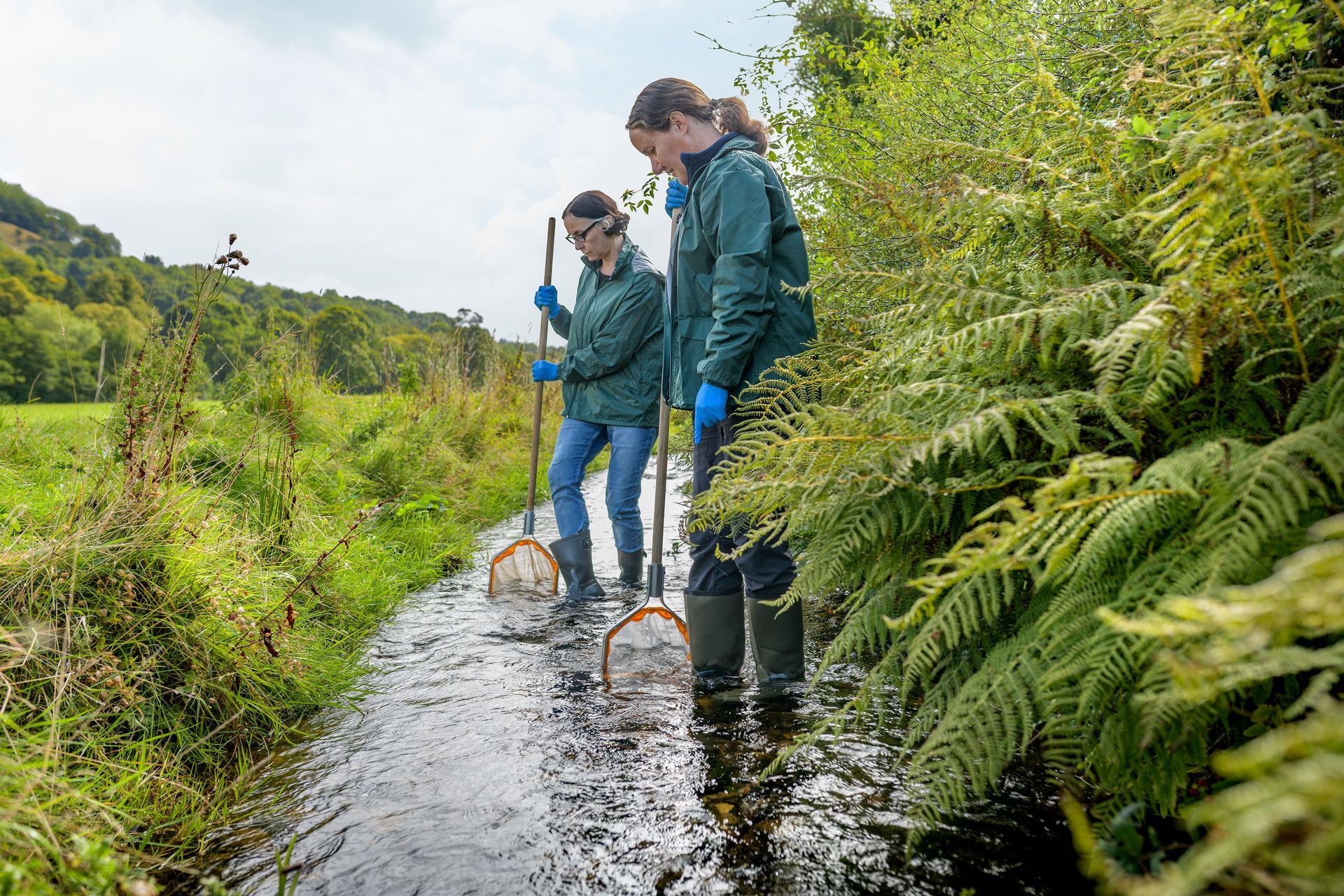Work of the DVRN
These case studies provide examples of our work on the ground. We welcome your ideas for new projects, or how existing ones could be developed.

Wild Wiske Revival: Clean and Green
Yorkshire Wildlife Trust with funding from the Water Environment Grant delivered vital river restoration on the River Wiske - one of the county’s most heavily modified rivers.
Working closely with local landowners the project aimed to:
- Reduce farm runoff and flooding
- Prevent sediment build-up in the River Wiske
- Create and enhance wildlife-rich riparian habitats
A major success was the daylighting of a culvert on the River Wiske. By removing the culvert roof, the project reduced flood risk to farmland and nearby buildings, while creating wildlife-friendly flood storage areas to hold excess water during heavy rain.
Key Achievements:
- 1,266m of riverbank restored through stabilisation and reprofiling
- 4.6km of new fencing installed to reduce livestock poaching, with another 2.9km underway
- 3 cattle drinking bays built to protect riverbanks and water quality
- 1,500 native trees planted along the upper Wiske near Appleton Wiske
- 1 culvert redesigned to improve flood resilience and wildlife habitat
Yorkshire Wildlife Trust continues to deliver river restoration and wetland creation across the Wiske catchment, including the Mid Swale Wetlands Nature Recovery Network. Future plans focus on restoring relic wetlands and developing new wetland habitats in North Yorkshire. For more information or to get involved contact Bernie Higgins.
Riparian Buffering
The DVRN partnership is working together to improve riparian habitats in North Yorkshire, delivering benefits for natural flood management (NFM), biodiversity, water quality, and cooler river temperatures.
This collaborative project has:
- Extended three existing initiatives – Brompton, Bishopdale, and Stank Beck
- Launched two new projects – Keeping Ure River Cool and Marchup Beck.
Keeping Ure River Cool
Led by Yorkshire Dales Rivers Trust and the YDNPA, this multi-year project will enhance riparian habitats across the River Ure catchment. Planting and habitat creation will:
- Provide shade to cool river temperatures in summer
- Improve water quality and aquatic habitats
- Boost river resilience against climate change
Marchup Beck Riparian Planting
At Marchup Beck, where two headwaters meet, new planting along riparian zones will protect water quality and habitat. Fencing at the natural slope will:
- Safeguard new trees
- Prevent livestock from entering the beck
A First for DVRN
This is the first joint funding application by DVRN, combining smaller partner projects into one successful bid. By working in partnership, DVRN is achieving greater impact on river restoration and climate resilience across the region.
Addingham 4 Becks (A4B)
This project put Town Beck, Back Beck, Lumb Gill Beck, and Wine Beck at the heart of the village, raising awareness of their value for biodiversity, water quality, and flood risk reduction.
Community Partnership
Led by the Addingham Environment Group with support from the DVRN, partners include the Environment Agency, Yorkshire Water, Bradford Council, Addingham Parish Council, YDRT, Wild Trout Trust, and Addingham Anglers.
Phase One: Flood Management
- Funded by the Wharfe Flood Partnership
- Collected data from local households on the 2015 Boxing Day floods
- Informed a Community Flood Event and local flood resilience plan
- Explored Natural Flood Management (NFM) and Sustainable Urban Drainage (SuDS)
Community Engagement
A team of volunteer Beck Stewards has been established, receiving training in:
- Hydrology and ecology
- Water quality monitoring and data interpretation
- 'Community plumbing' - understanding the underground water network
This volunteer programme is central to building long-term stewardship of the becks.
Phase Two: Biodiversity
Next steps will focus on Lumb Beck, improving habitat connectivity between the moor and the River Wharfe to enhance local biodiversity.
Bishopdale NFM
The Bishopdale Natural Flood Management (NFM) Project, delivered by the Yorkshire Dales Rivers Trust with support from the Environment Agency, is helping to reduce flood risk in the Bishopdale valley while boosting local wildlife and habitats.
Part of the National NFM Programme, the project worked with landowners and volunteers to 'slow the flow' of water across the landscape, easing pressure on downstream communities.
Over three years, the project delivered major interventions including 28,000 trees, 6km of hedgerows, 17 scrapes, and 12 leaky dams. These natural features improve water infiltration, store excess rainfall and create diverse habitats for species such as barn owls, otters, curlew and lapwing.
Supported by local volunteers and the Yorkshire Dales National Park Young Rangers, the project demonstrates how working with nature delivers real benefits for people, wildlife and climate resilience. Ongoing monitoring will feed into the national evidence base for NFM and help shape future flood management across the Yorkshire Dales.
Headwaters for Healthy Rivers
Headwaters for Healthy Rivers was an ambitious project funded by the Water Environment Grant scheme, and successfully delivered by Nidderdale AONB.
Its main objectives were to:
- Reduce sediment load and diffuse pollution within the Nidd Tributaries, River Crimple and Park Beck catchments. Reduce phosphate, ammonia and sediment within the watercourses by implementing changes to land management and creating new riparian habitats.
- Control Invasive Non-Native Species (INNS) in the upper Nidd.
Key achievements:
· 1200m2 of sediment trap ponds created
· 40 leaky dams installed
· 3.23km of riparian hedgerows planted
· 2Ha riparian trees planted and associated fencing
· 4.5km of ditches / streams / rivers fenced off from stock
· >£30k remedial measures to reduce agricultural pollution delivered
· Two year Himalayan balsam survey, control and monitoring programme
· 20ha reduction of Himalayan balsam after first year of control
Himalayan balsam control along the upper Nidd and tributaries in that area continues in partnership with Nidderdale Angling Club and Yorkshire Water.
Practical Guide to Lowland Natural Flood Management Measures
Floods are nothing new - humanity has lived with extreme weather for thousands of years. However, climate science indicates that climate change is increasing both the frequency and intensity of heavy rainfall events, leading to more frequent and severe flooding.